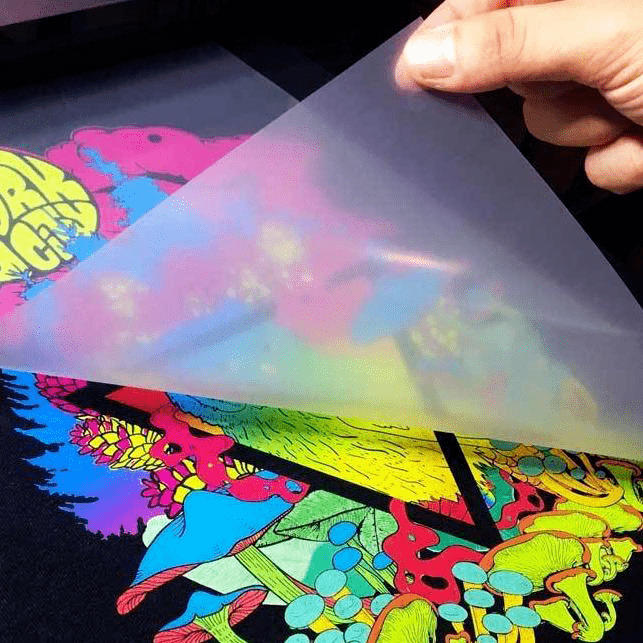Mastering DTF Printing: Advice for Getting Vibrant and Durable Prints
In the world of fabric printing, achieving vibrant and sturdy prints is a desired ability that can elevate the high quality of your result. Understanding DTF (Direct to Film) printing requires a blend of technological expertise, precision, and focus to detail. From choosing the ideal products to tweak print setups and perfecting post-printing finishing techniques, there are countless aspects that can affect the outcome of your prints. Comprehending exactly how to browse these details can make all the difference between a mediocre result and a genuinely outstanding one.

DTF Printing Fundamentals
For those brand-new to the globe of fabric printing, recognizing the principles of DTF printing is vital to mastering this cutting-edge strategy. Straight to Movie (DTF) printing is a modern-day approach that includes transferring layouts from a special movie onto different fabrics utilizing a warmth press. Unlike standard techniques like display printing, DTF offers benefits such as dynamic colors, intricate outlining, and the capability to print on varied products like cotton, polyester, and blends.
The process starts by publishing the design on a special DTF movie using a compatible printer with CMYK or CMYKW ink sets. When the design is printed, it is after that treated with a warm press to produce a long-lasting and resilient print. DTF printing is understood for its capability to recreate complex layouts with high precision and shade accuracy, making it a prominent selection for businesses wanting to create custom-made garments, advertising items, and a lot more.
Choosing the Right Materials

Equally vital is the option of the adhesive powder. The adhesive powder functions as a bonding representative between the published style and the material, so it has to have solid bond properties to make certain a resilient and long lasting transfer. Various textiles may require different kinds of sticky powders, so it is crucial to match the powder to the fabric kind for ideal outcomes - DTF Printing. By thoroughly selecting the best products for DTF printing, printers can boost the quality, vibrancy, and durability of their prints.
Optimizing Publish Settings
When aiming to achieve the most effective results in DTF printing, thorough interest to optimizing print setups is important for making sure precise and high-quality transfers onto textiles. One essential facet to take into consideration when optimizing print setups is the resolution. Higher resolutions normally cause sharper and more thorough prints, boosting the total high try this website quality of the transfer. In addition, readjusting the ink thickness can help attain lively colors and make sure that the style stands out on the material.
One more vital setting to optimize is the print rate. Finding the ideal balance between rate and quality is vital. While boosting the rate can improve effectiveness, it might jeopardize the final print's quality and color saturation. Trying out with different speeds and observing the outcomes can help determine the optimal setup for each and every print task - DTF Printing.
Moreover, tweak shade profiles and making sure proper shade monitoring are important for achieving precise and regular colors across various prints. By adjusting color setups and accounts, printers can lessen color discrepancies and generate uniform outcomes, improving the general print quality and client fulfillment.
Preparing Artwork for DTF Printing
Transform the artwork to CMYK color setting to ensure that the shades convert precisely from screen to print. Remember to mirror the final layout prior to publishing to guarantee that it moves correctly onto the garment. By following these steps and paying close focus to the details, you can prepare artwork that is optimized for sturdy and dynamic DTF prints.
Post-Printing Finishing Techniques
Executing efficient post-printing ending up techniques is essential to enhancing the longevity and visual appeal of DTF prints on fabrics. As soon as the printing procedure is complete, applying warm to the printed design is vital.
When the film is eliminated, the print might call for additional treating time to better set the ink right into the material. This step helps improve the washability and toughness of the print, guaranteeing it can withstand numerous wash cycles without fading or cracking.
Furthermore, trimming any excess film around the design can give the last print a specialist and clean appearance. Putting in the time to effectively complete DTF prints post-printing can considerably impact the general top quality and durability of the textile layout.

Conclusion
Finally, grasping DTF printing needs a comprehensive understanding of the basics, choosing appropriate materials, enhancing print setups, preparing art work efficiently, and making use of post-printing ending up techniques. By following these tricks and find more ideas, one can Going Here achieve durable and vibrant prints that satisfy their wanted quality standards. Constant technique and interest to detail are necessary in accomplishing effective results in DTF printing.
From picking the appropriate products to adjust print setups and refining post-printing finishing methods, there are various factors that can influence the result of your prints. Unlike conventional approaches like screen printing, DTF offers advantages such as lively colors, detailed outlining, and the ability to publish on diverse materials like cotton, polyester, and blends.
Once the design is printed, it is then cured with a warm press to develop a resilient and long-lasting print.When aiming to attain the best outcomes in DTF printing, careful interest to maximizing print setups is important for making certain specific and high-quality transfers onto textiles.In verdict, grasping DTF printing requires a comprehensive understanding of the essentials, selecting proper materials, maximizing print settings, preparing art work successfully, and making use of post-printing finishing strategies.
Comments on “Ingenious DTF Printing Solutions: Boost Your Garments with Direct-to-Film Modern Technology”